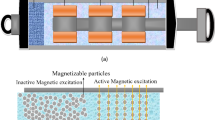Abstract
The finite element method is the most common method used to solve engineering and mathematical model problems. Related solution areas include structural analysis, heat transfer, mass transport and electromagnetic potential. FEM is a specific numerical method used to solve partial differential equations in two or three space variables. To solve a problem, FEM breaks up a large system into smaller, simpler parts called finite elements. First, a three-dimensional model of the system to be analyzed is produced. While defining the model, the materials and connection types found in the model are also deter-mined. Afterwards, the model is divided into small parts and analyzed under specified conditions. A crash test will be conducted in this study. For this, the conditions of the vehicle parts will be examined by hitting a wall under the conditions of which the model design of the vehicle is determined. Crash tests were carried out for two different bumper thicknesses on the same vehicle and the test results were examined. The vehicle speed is modeled as 20 m/s in the simulation carried out from the moment of impact until 0.14 seconds later. The effect of buffer thickness on axial displacements at impact and energy changes are presented.
Similar content being viewed by others
References
Abedini, M. and Zhang, C. (2021). Performance assessment of concrete and steel material models in ls-dyna for enhanced numerical simulation, a state of the art review. Archives of Computational Methods in Engineering 28, 4, 2921–2942.
Euro, N. (2020). Euro NCAP 2022.
Forsberg, J. (2013). Short introduction to LS-DYNA and LS-PrePost. DYNAMORE Nordic.
Fish, J. and Belytschko, T. (2007). A First Course in Finite Elements. 1st edn. John Wiley & Sons. New York, NY, USA.
Gadagi, B. and Lekurwale, R. (2021). A review on advances in 3D metal printing. Materials Today: Proceedings, 45, 277–283.
Kuznecovs, A., Schreuder, M. and Ringsberg, J. W. (2021). Methodology for the simulation of a ship’s damage stability and ultimate strength conditions following a collision. Marine Structures, 79, 103027.
Li, G., Ma, H., Guan, T. and Gao, G. (2020). Predicting safer vehicle font-end shapes for pedestrian lower limb protection via a numerical optimization framework. Int. J. Automotive Technology 21, 3, 749–756.
Liu, Y. and Glass, G. (2013). Effects of mesh density on finite element analysis. SAE Paper No. 2013-01-1375.
Long, C. R., Yuen, S. C. K. and Nurick, G. N. (2019). Analysis of a car door subjected to side pole impact. Latin American J. Solids and Structures 16, 8, 1–17.
Nikam, S. K. and Jaiswal, S. (2021). Experimental and finite element analysis of nonaxisymmetric stretch flanging process using AA 5052. Int. Conf. Innovations in Product, Process and System Design (ICIPPSD), Indore, India.
Pan, C., Li, X., Li, J. and Zhao, J. (2021). Numerical investigation of blast-induced fractures in granite: insights from a hybrid LS-DYNA and UDEC grain-based discrete element method. Geomechanics and Geophysics for Geo-Energy and Geo-Resources 7, 2, 1–18.
Pepper, D. W. and Heinrich, J. C. (2017). The Finite Element Method: Basic Concepts and Applications with MATLAB®, MAPLE, and COMSOL. CRC press. Boca Raton, Florida, USA.
Park, D. K. (2014). Bumper optimum design using the dynamically equivalent beam under various impact conditions. Int. J. Automotive Technology 15, 6, 937–943.
Reddy, J. N. (2004). An Introduction to the Finite Element Method. 3rd edn. McGraw-Hill. New York, NY, USA.
Shih, R. H. and Schilling, P. J. (2020). Parametric Modeling with SOLID WORKS 2020. SDC Publications. Mission, Kansas, USA.
Thomas, D. J. (2017). Using finite element analysis to assess and prevent the failure of safety critical structures. J. Failure Analysis and Prevention 17, 1, 1–3.
Vangi, D., Begani, F., Gulino, M. S. and Spitzhüttl, F. (2018). A vehicle model for crash stage simulation. IFAC-PapersOnLine 51, 2, 837–842.
Author information
Authors and Affiliations
Corresponding author
Additional information
Publisher’s Note
Springer Nature remains neutral with regard to jurisdictional claims in published maps and institutional affiliations.
Rights and permissions
About this article
Cite this article
Özcan, F., Gullu, A. & Ersoy, S. Effect of Bumper Thickness with Collision Simulation of Passenger Vehicles. Int.J Automot. Technol. 24, 241–246 (2023). https://doi.org/10.1007/s12239-023-0021-x
Received:
Revised:
Accepted:
Published:
Issue Date:
DOI: https://doi.org/10.1007/s12239-023-0021-x




